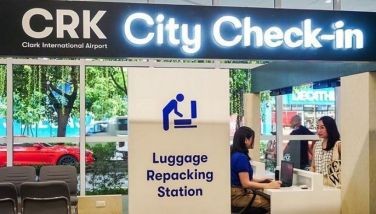Bright prospects for RP mining industry cited
October 3, 2005 | 12:00am
BAGUIO CITY — Prospects for the country’s mining industry are bright, the Mines and Geosciences Bureau said.
Presidential Envoy for Mining Delia Albert said the industry’s target of generating $6 billion in investments for 23 priority mining projects by 2010 would be met.
"Last year, we generated investments of $500 million from four mines, which are only in the exploration or pre-feasibility stages," she said in a forum on responsible mining here. "We expect more investments on the fourth and fifth year, when most of the mines are already in operation."
Albert said the country has become a primary option for mining investments because of its proximity to big Asian markets such as China, Japan, South Korea and India.
"It would be very expensive for these countries to source their mineral requirements from South America, where some of the world’s biggest mines are located, because of the transportation cost," she said.
She said that the governments of India, China, Japan, Australia and Canada all want to sign agreements with the Philippines to undertake a mineral assessment of the entire country.
Albert added that out of a total of nine million hectares of potential mining areas; only 260,000 hectares or 2.9 percent-have mining claims to date.
"Australia and Canada placed their bets on the Philippines a long time ago," she said. "They not only have technical expertise – they are also adept at raising funds. On the other hand, China is a new but very aggressive player. After all, it is the world’s biggest market."
Stakeholders from Luzon recently assessed the progress of implementation of the government’s Mineral Action Plan (MAP), which charts the course for the mining sector since the Supreme Court upheld the constitutionality of Republic Act 7942 or the Philippine Mining Act late last year.
The MAP was crafted after several consultations with stakeholders, the private sector, and government agencies following the issuance of Executive Order 270 or the National Policy Agenda on Revitalizing Mining in the Philippines in January 2004.
"We have to highlight the various initiatives being done by the different stakeholders involved in the development of the country’s mining industry and emphasized the government’s response to it," Albert said.
The government, Albert said, has set in place mechanisms to address the social and environmental issues and hopes that through active partnerships with the private sector, local communities and indigenous peoples, it will usher in a revitalized mining industry.
The series of stakeholders’ fora including those held here on Friday will culminate in a national forum that will take place at the same time at the 6th Asia Pacific Mining Conference and Exhibition next month.
The conference will be hosted by the Philippines as the presiding chair of the ASEAN Federation of Mining Association (AFMA) led by Benjamin Philip Romualdez, president of the Philippine Chamber of Mines.
Presidential Envoy for Mining Delia Albert said the industry’s target of generating $6 billion in investments for 23 priority mining projects by 2010 would be met.
"Last year, we generated investments of $500 million from four mines, which are only in the exploration or pre-feasibility stages," she said in a forum on responsible mining here. "We expect more investments on the fourth and fifth year, when most of the mines are already in operation."
Albert said the country has become a primary option for mining investments because of its proximity to big Asian markets such as China, Japan, South Korea and India.
"It would be very expensive for these countries to source their mineral requirements from South America, where some of the world’s biggest mines are located, because of the transportation cost," she said.
She said that the governments of India, China, Japan, Australia and Canada all want to sign agreements with the Philippines to undertake a mineral assessment of the entire country.
Albert added that out of a total of nine million hectares of potential mining areas; only 260,000 hectares or 2.9 percent-have mining claims to date.
"Australia and Canada placed their bets on the Philippines a long time ago," she said. "They not only have technical expertise – they are also adept at raising funds. On the other hand, China is a new but very aggressive player. After all, it is the world’s biggest market."
Stakeholders from Luzon recently assessed the progress of implementation of the government’s Mineral Action Plan (MAP), which charts the course for the mining sector since the Supreme Court upheld the constitutionality of Republic Act 7942 or the Philippine Mining Act late last year.
The MAP was crafted after several consultations with stakeholders, the private sector, and government agencies following the issuance of Executive Order 270 or the National Policy Agenda on Revitalizing Mining in the Philippines in January 2004.
"We have to highlight the various initiatives being done by the different stakeholders involved in the development of the country’s mining industry and emphasized the government’s response to it," Albert said.
The government, Albert said, has set in place mechanisms to address the social and environmental issues and hopes that through active partnerships with the private sector, local communities and indigenous peoples, it will usher in a revitalized mining industry.
The series of stakeholders’ fora including those held here on Friday will culminate in a national forum that will take place at the same time at the 6th Asia Pacific Mining Conference and Exhibition next month.
The conference will be hosted by the Philippines as the presiding chair of the ASEAN Federation of Mining Association (AFMA) led by Benjamin Philip Romualdez, president of the Philippine Chamber of Mines.
BrandSpace Articles
<
>
- Latest
- Trending
Trending
Latest
Trending
Latest
Recommended




























